Your hands are covered in soil, there are pieces of split-leaf philodendron everywhere and you just aren’t sure what to do next.
This easy step-by-step guide on how to propagate a split-leaf philodendron will have you dusting off your sleeves with confidence and propagating your split-leaf like a pro in no time. Watching your new evergreen shrub grow into tomorrow is one of the most satisfying things you can do!
Split-Leaf Philodendron vs. Monstera Deliciosa Plants
Looking around the web you may notice a lot of confusion between the split-leaf philodendron and the Monstera plant. While both the Monstera deliciosa and Philodendron come from the Araceae family, they both have their own genus. This means that although they are similar in appearance they are completely different plants.
Don’t worry, even plant experts are confused!
According to the University of Wisconsin-Madison’s Horticulture department, Monstera deliciosa is the botanical name for split-leaf philodendron or Swiss cheese plant. Cellar Door Plants, a plant nursery that we are affiliated with, says the same thing: Monstera deliciosa and split-leaf philodendron are one and the same.
The problem?
Monstera deliciosa is the botanical name of, well, the monstera. Thaumatophyllum Bipinnatifidum, or Philodendron Selloum, is the botanical name for split-leaf philodendron. So they can’t be the same. They each have their own genus, though they come from the same family.
So, how do you tell which one is which? It’s simple, take a look at the leaves.
If your plant’s leaves are connected at all and show holes where the tips of the leaves join together, you’ve got a Monstera deliciosa. In fact, Monstera leaves are responsible for its common name, the Swiss cheese plant. Split-leaf philodendrons are just that, split leafed. Each leaf will have many deep splits, but will never join at the tip.
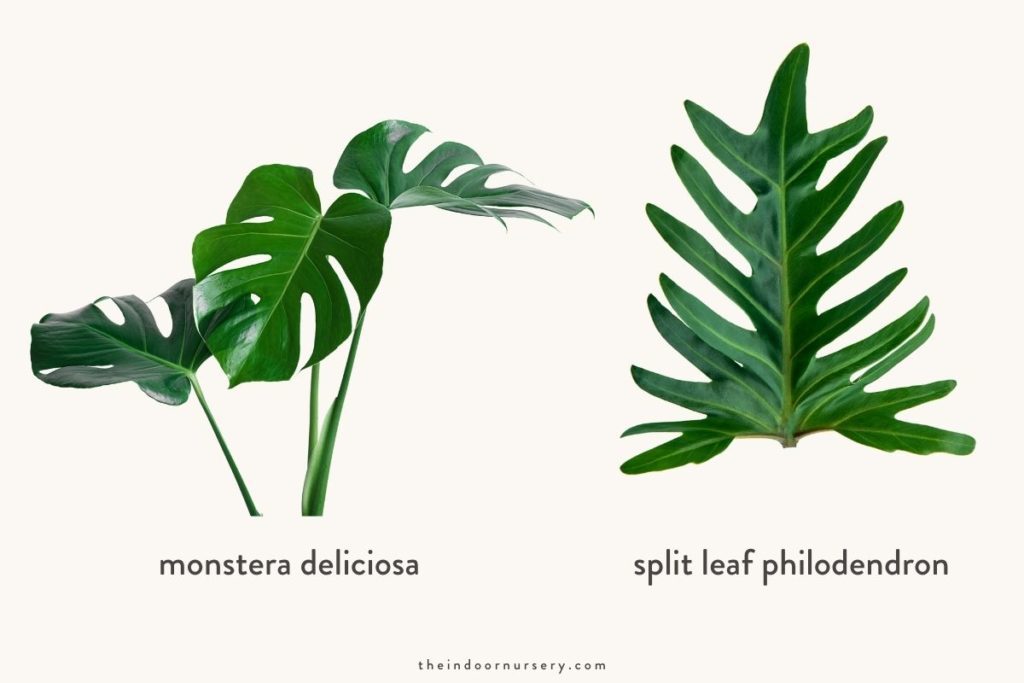
How to Propagate a Split-Leaf Philodendron
Once you learn how to propagate a split-leaf philodendron, you’ll be able to propagate most other plants that grow aerial roots. Your home is about to turn into a wild indoor jungle.
STEP 1: find good aerial roots on your split-leaf philodendron plants to be used for propagation
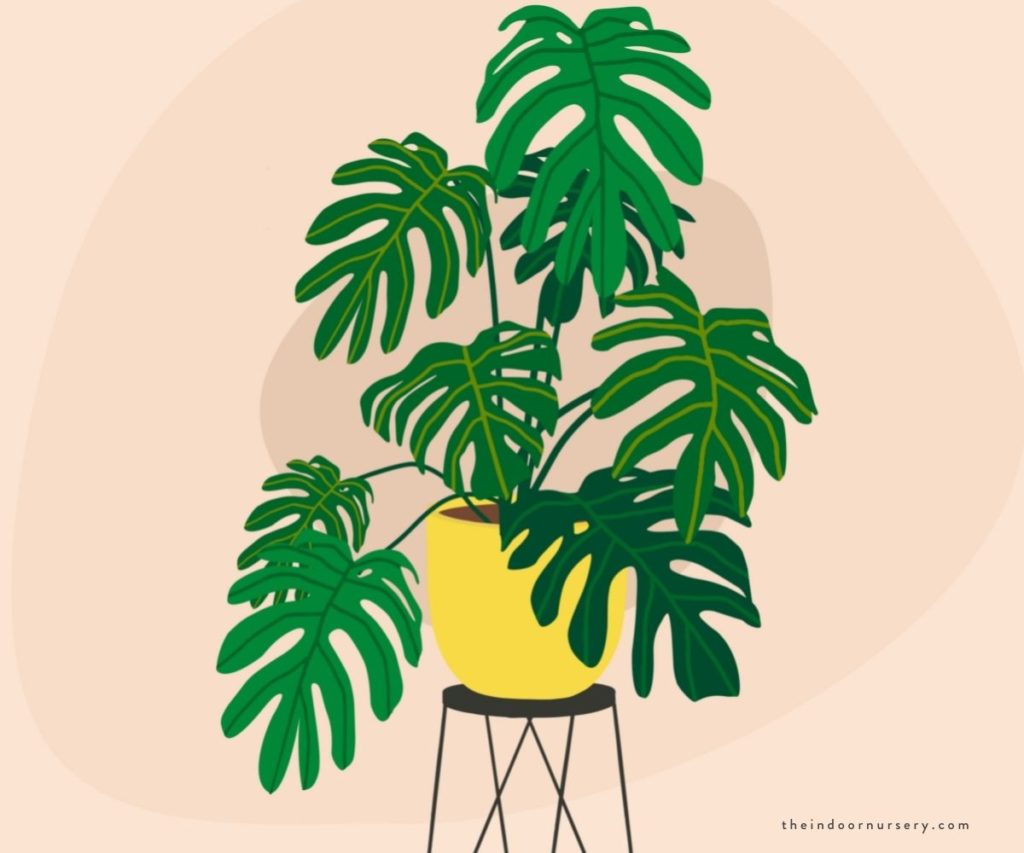
Locate a big beautiful happy philodendron. You’ll want to select a mature plant that has multiple stems and displays aerial roots in some areas.
An aerial root is one that grows right out of the steam of the philodendron plant directly into the air.
These roots as you will soon find out can create a whole new root system. Carefully select a section of the split-leaf philodendron that has at least two or three nodes and a few leaves growing from the plant stem.
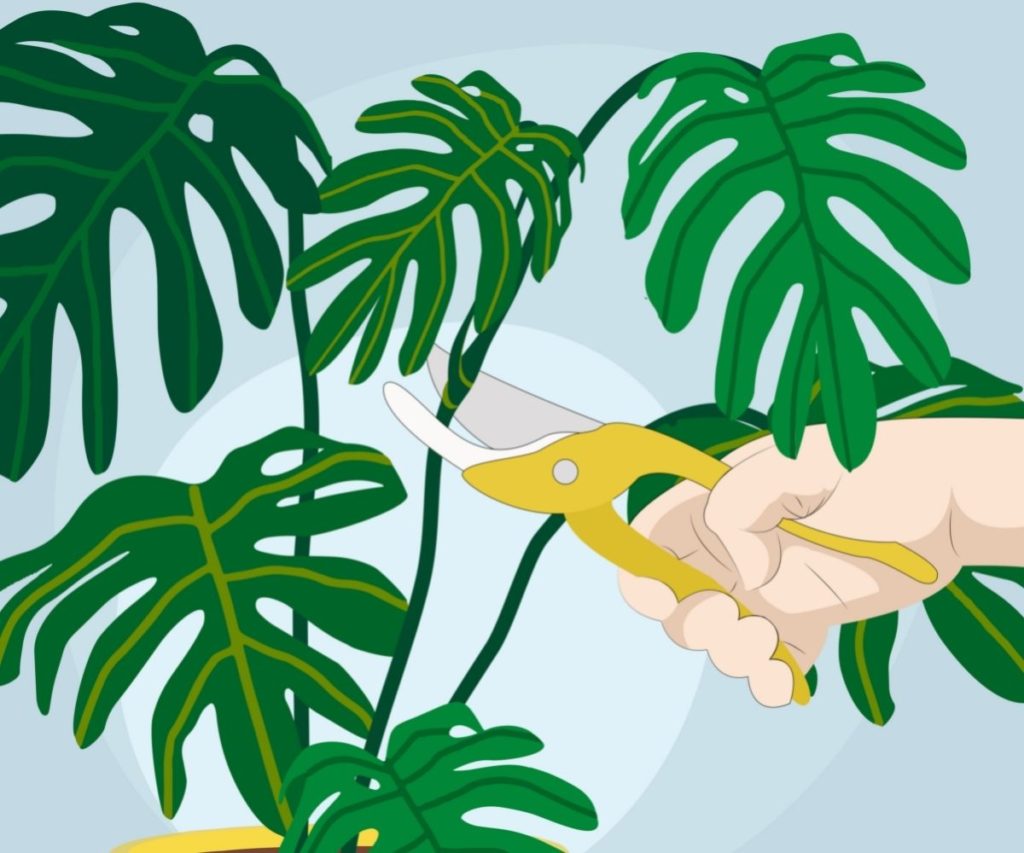
A leaf node looks like a brown ring that encircles the stem where an old leaf once grew. Each leaf node can support one leaf and multiple roots. These stem cuttings will give life to your brand new split-leaf philodendron plant.
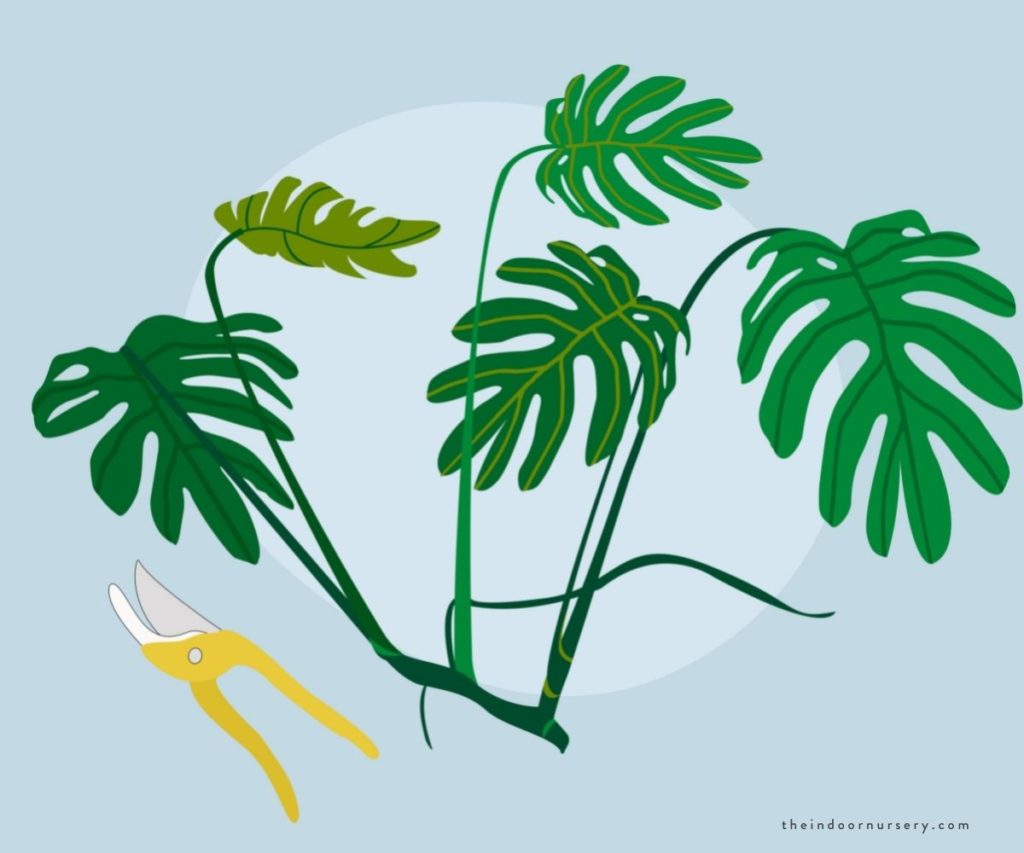
If you have a healthy large plant with multiple nodes, then you can cut between the nodes and propagate multiple cuttings at a time.
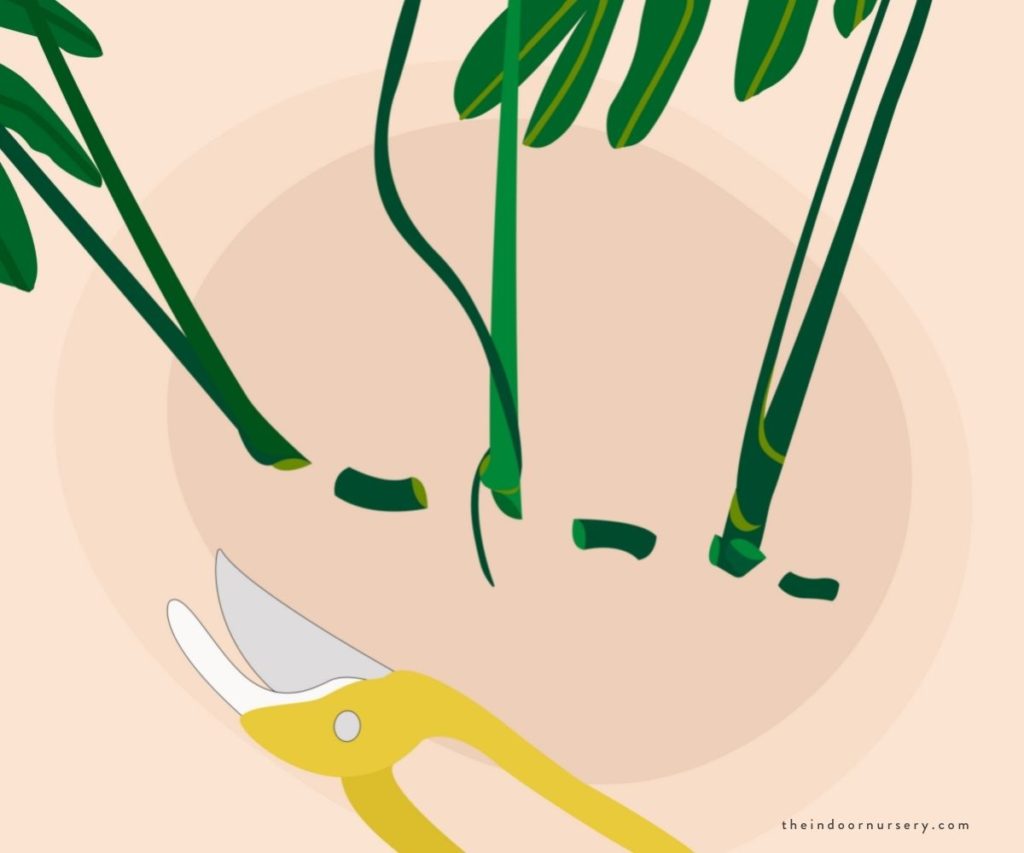
Where to cut a philodendron to propagate
With a sanitized pair of pruning shears or a sharp knife, cut the stem at a sharp angle just below the 2nd or 3rd node. If there are aerial roots in the section you cut they can aid in the establishment of the new plant, but aren’t necessary.
STEP 2: choose your method to propagate split-leaf philodendron
You’ve got your cutting and you’re ready to get rooting! Now you just need to select from one of the below methods.
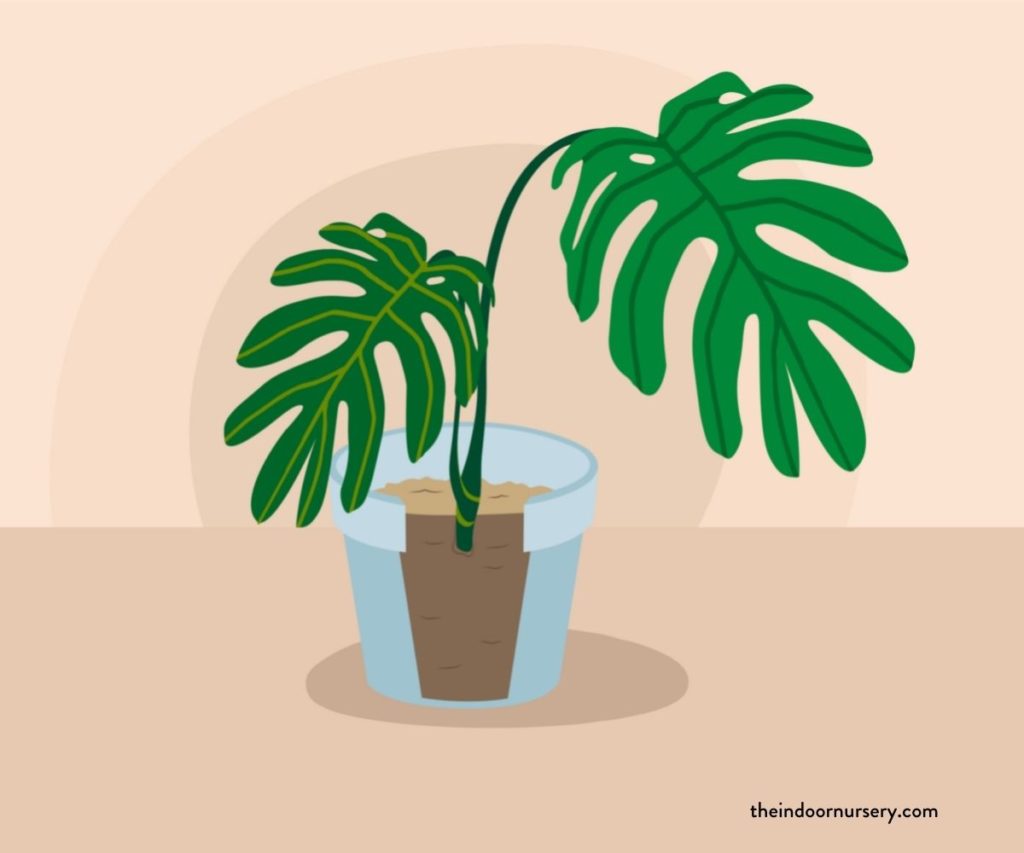
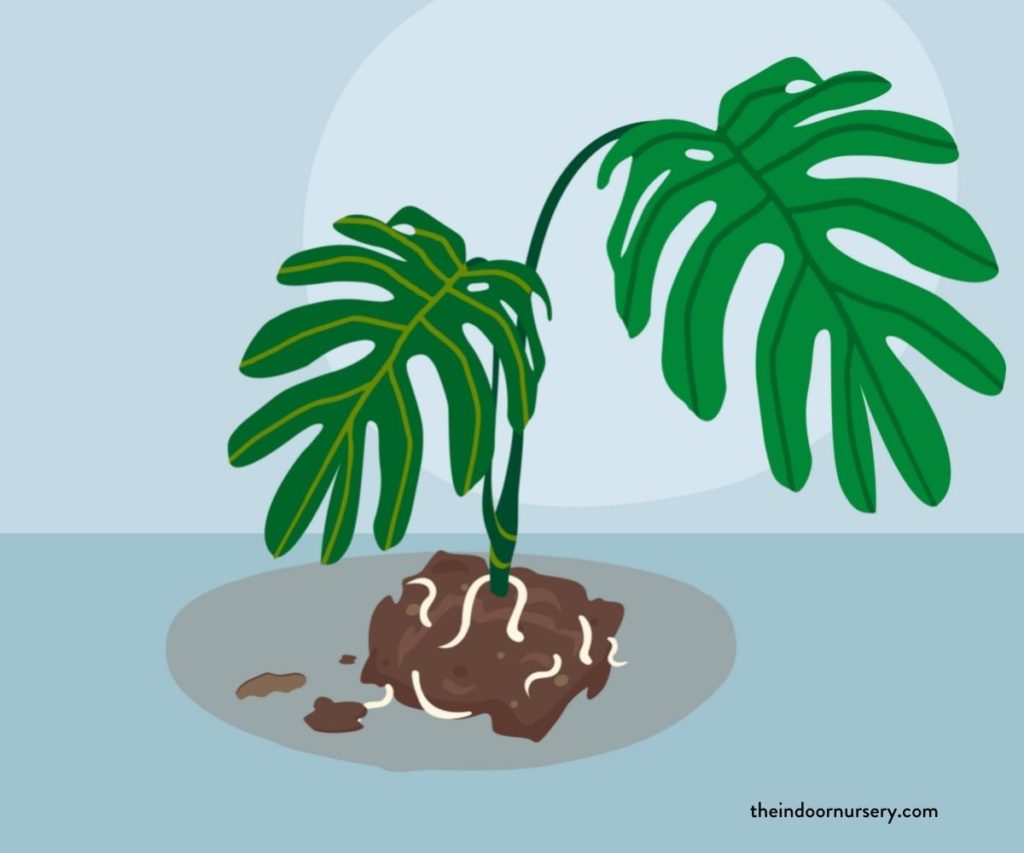
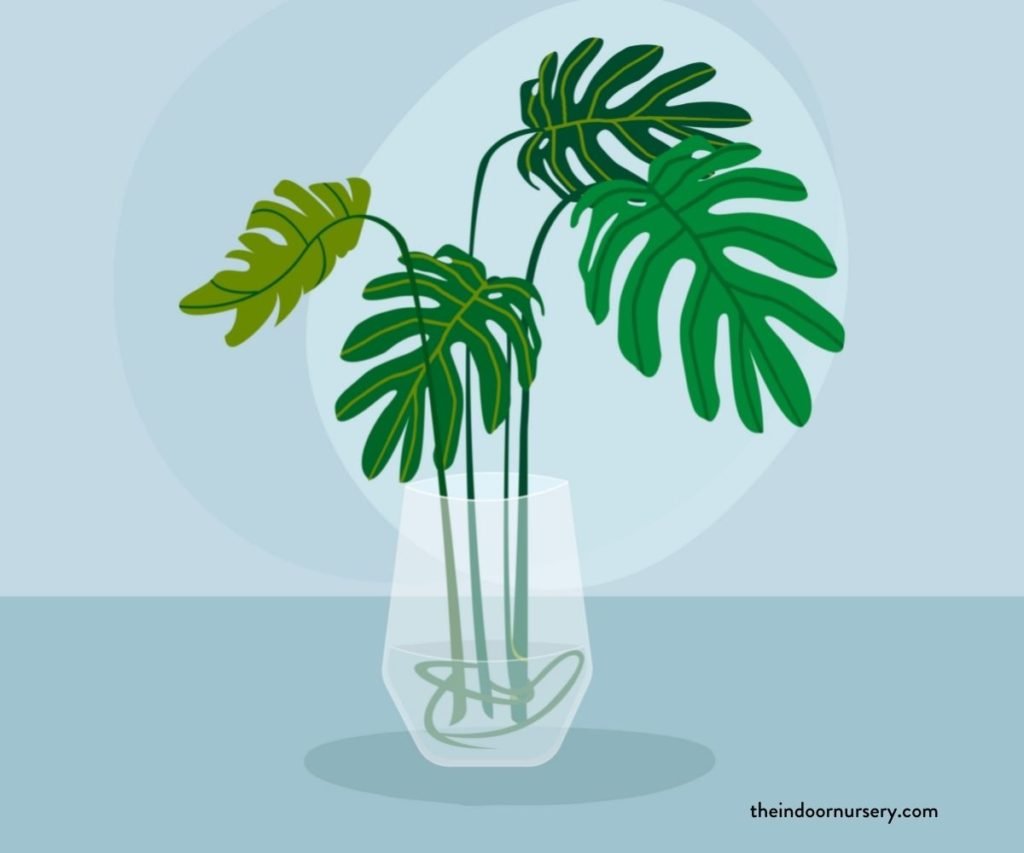
Glass jar method
You’ll need:
- Glass jar
- Rooting hormone
- Room temperature water
Carefully open the package of rooting hormone and sprinkle a little bit onto a paper plate. The rooting hormone acts as a stimulant for new root growth.
Now dip the cut end of the stem in the rooting hormone. Submerge the stem, cut the section first, in your glass jar filled with water.
Change the water every couple of weeks or when you notice any type of algae growth in the water. You’ll want to keep your cutting submerged until roots form, you may even notice that a new leaf forms.
Potting soil method
You’ll need:
Get your potting soil nice and damp and place it in the small pot. Make sure you select well-draining soil, this will help avoid any kind of root rot. Indent the soil vertically at an angle to within a half-inch of the bottom of the pot.
Gently sprinkle a bit of the rooting hormone on a paper plate and dip the cut end of the stem in it. The hormone will help new roots form quickly. P
lace the stem into the pot with the cut end down vertically at an upward angle. Gently pat the soil around the stem. A piece of the stem and attached leaves should stick out of the soil. You’re aiming for healthy root growth that will give rise to a complex root ball.
Air layering method
You’ll need:
- Sphagnum moss
- Rooting hormone
- Plastic wrap, or plastic bag
- Sharp knife
- 2 twist ties
- Sharp pruning shears
Air layering is a really cool way to propagate split-leaf philodendrons. If you are new to plant propagation I’d recommend the jar or soil method. First, you’ll want to locate a node on the stem of the plant. Take your very sharp sterilized knife and slice the stem just below a node at a 45-degree angle from the top side of the stem. The cut should be made perfect through half of the stem.
Sprinkle just a tiny bit of rooting hormone on the cut as you gently put pressure on the upper part of the stem opening the cut slightly.
Get your sphagnum moss out and wet it thoroughly. Gently place the moss into the cut and around the plant surrounding the cut stem completely. Secure the moss into place by wrapping a piece of plastic wrap around the moss a couple of times. You can then hold the plastic and moss in place by tying each termination with a twist tie.
Read about self-watering moss poles for some ideas.
In the next couple of weeks, you will start to see new roots shooting out into the moss. Once you see multiple roots have formed you can cut the stem completely just below the node where you made your initial slice. There you have it, you’re ready to pot your new split-leaf philodendron plant.
STEP 3: wait for the magic to happen
You’ll want to keep an eye on your newly propagated split-leaf philodendron. Find a place in your home where there is plenty of bright indirect light, a south-facing window is great.
If you’ve chosen the soil option you’ll want to keep the potting mix extra damp as roots grow and keep an eye out for new leaf growth.
If the jar method was for you, make sure the water is changed at least once every two weeks or when any type of algae growth appears. In most cases, if you’re propagating during the growing season, spring or summer, you should have a new plant ready to pot within 2-4 weeks.
STEP 4: transfer to pot
It’s time you’ve noticed new leaves starting to unfurl, usually indicating a solid root ball. Or, if you’ve chosen the water method you may see an extensive root system starting to develop. You’ll want to transfer your newly rooted plant into a larger pot.
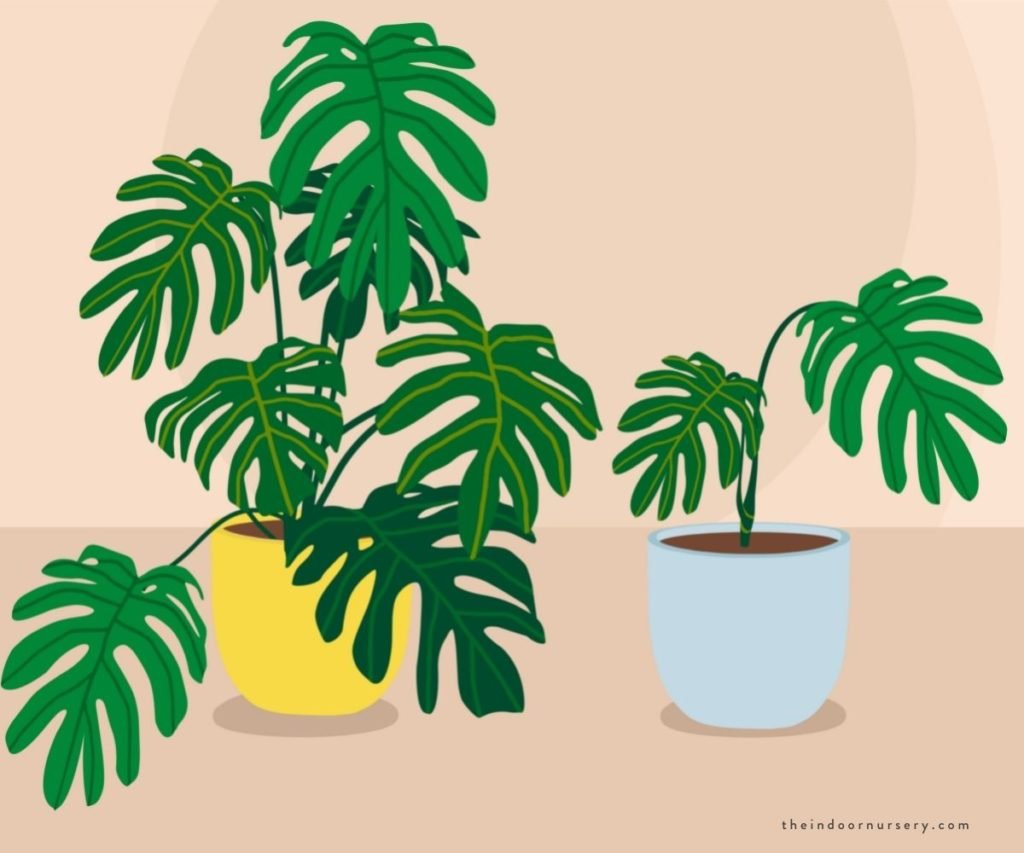
What you need:
- Small pot with drainage holes, about 3 times larger than the original stem cutting
- Potting soil
Fill your pot up close to the top with soil and make sure it is nice and damp. Gently make a space in the soil with your fingers for your rooted cuttings. Place the plant down into the soil and gently compact, add more soil if necessary.
Make sure the new leaf growth is above the top of the soil. Once the split-leaf philodendron is planted, give it some water and make sure it gets plenty of bright light, but not direct sunlight.
What you really wanna know about split leaf philodendron propagation
Can you propagate a split-leaf philodendron in water?
Yes, it’s actually quite easy to propagate a split-leaf philodendron in water. Aerial roots, which occur quite abundantly on the split-leaf, make it easy to propagate. With a bit of know-how, a pair of scissors, and some rooting hormone you’ll have new split-leaf philodendrons in no time.
Can philodendron be propagated from a leaf?
No, you’ll need more than just a leaf to make a new split-leaf philodendron. Leaves on their own do not contain the structure necessary to make a new plant. If you include the node of the leaf, which is the brown ring around the stem from which the leaf grows, you can make new split-leaf philodendrons all day long.
Can you divide a split-leaf philodendron?
Yes, split-leaf philodendrons are really easy to divide. Once the plant is mature and has a big healthy root ball and plenty of aerial roots you could consider dividing your split leaf. Late winter or early spring is the best time to separate the split-leaf into different pots and make new plants.
Can you propagate a philodendron without a node?
No, you cannot grow a new split-leaf philodendron without a node. Just placing a leaf with no node in soil or a jar of water will not make a new plant. Nodes, which are brown sections that encircle the stem of the plant, contain the information and structure necessary to make new plants.
Why doesn’t my split-leaf philodendron look happy?
If you notice drooping leaves or yellowing leaves there are a couple of easy solutions. Drooping leaves are an indication that your plant isn’t getting enough water. Increase your water slightly over the next month and wait for results. If yellow leaves are your issue the split-leaf may be getting too much direct sunlight. Try relocating the plant away from its current location, but make sure it’s still getting plenty of bright indirect light.
Into the sunset…
As promised, split-leaf philodendron propagation isn’t brain surgery. Now it’s time to sit back, relax and watch your brand new split-leaf thrive. You did it, you personally gave life to a brand new plant. Revel in the joy and satisfaction and get ready for your next plant project.
Need advice on propagating other beautiful house plants? Want more specific information on the complete care of your split-leaf philodendron? Take a look at our split-leaf philodendron care guide.
More How To Guides
- How To Get Rid Of Scale On Plants
- DIY Terrarium Table: How To Make A Table With Plants Inside
- How to Use Leca for Plants: Step-by-Step Guide with Pictures
- How To Use Grow Lights For Indoor Plants
- How To Propagate Peperomia Plants 2 Ways
- DIY Propagation Box With Grow Light
- How To Make Pothos Fuller (In 5 Minutes)
- How to Make a Moss Pole for Your Climbing Plants
- How to Make Potting Soil for Indoor Plants, Plus My Secret Ingredient
- How to Propagate a Split-Leaf Philodendron: Easy Step-by-Step Guide

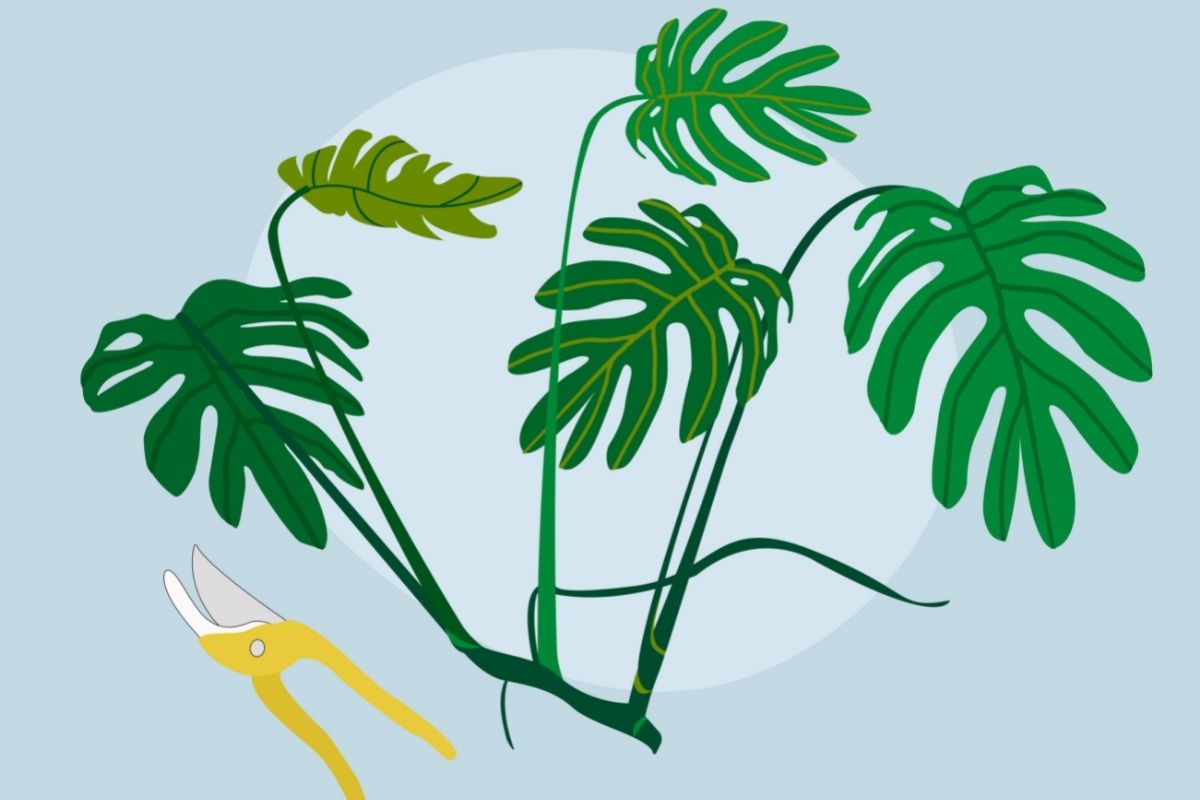
Really enjoyed your article. The links to Amazon products were great for gift giving this time of year too.
That’s awesome, Shar. Thanks for saying so! I’ll be sure to pass the feedback onto Chris 😊